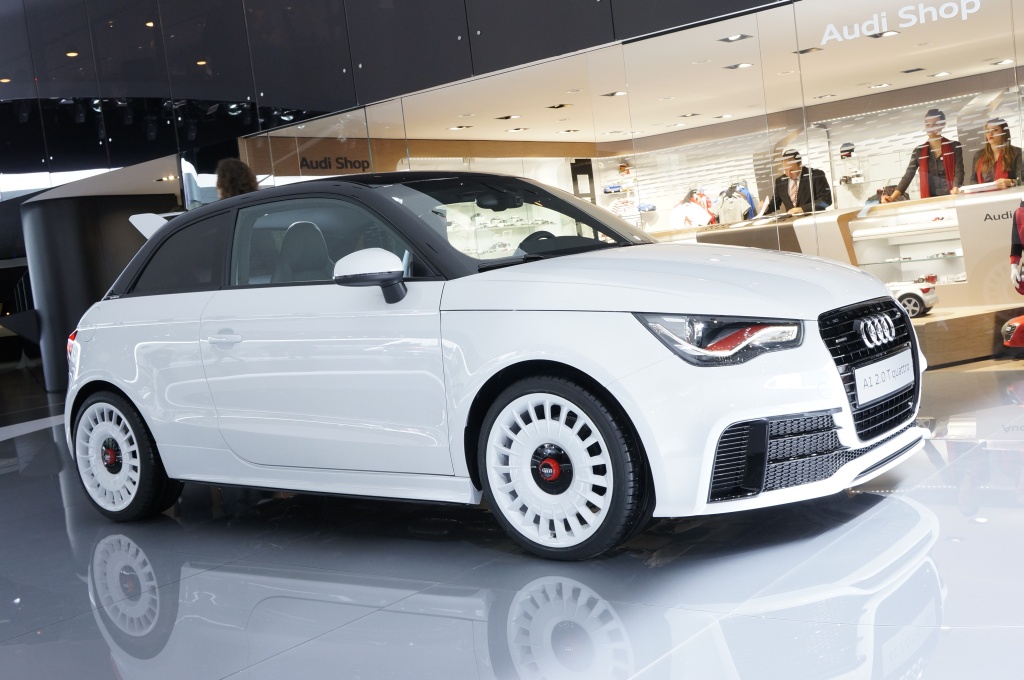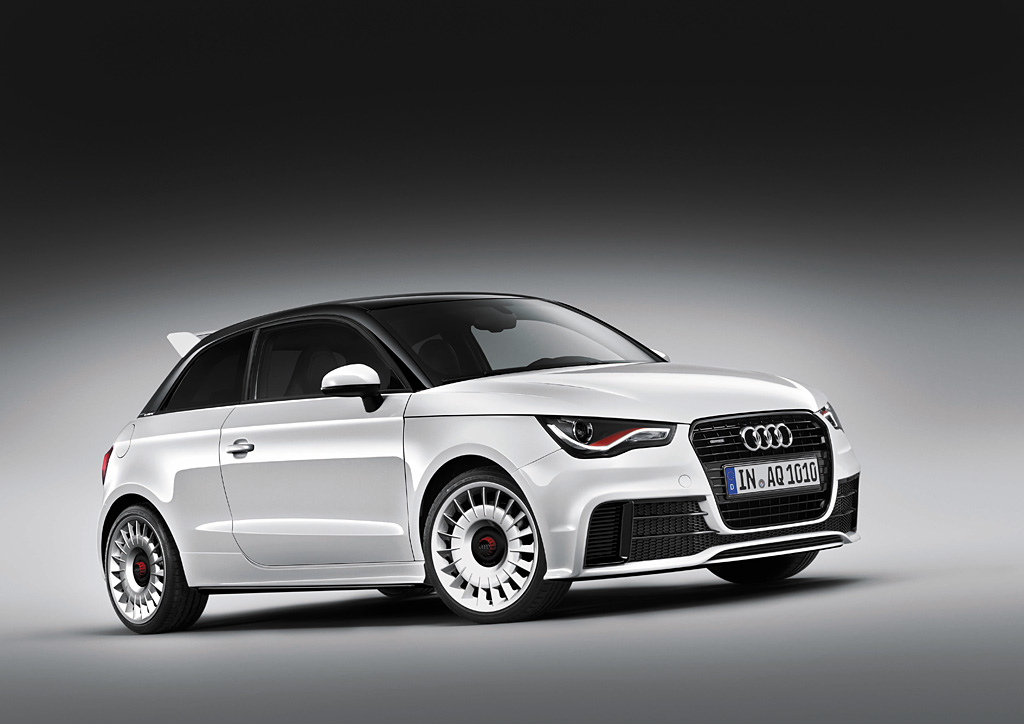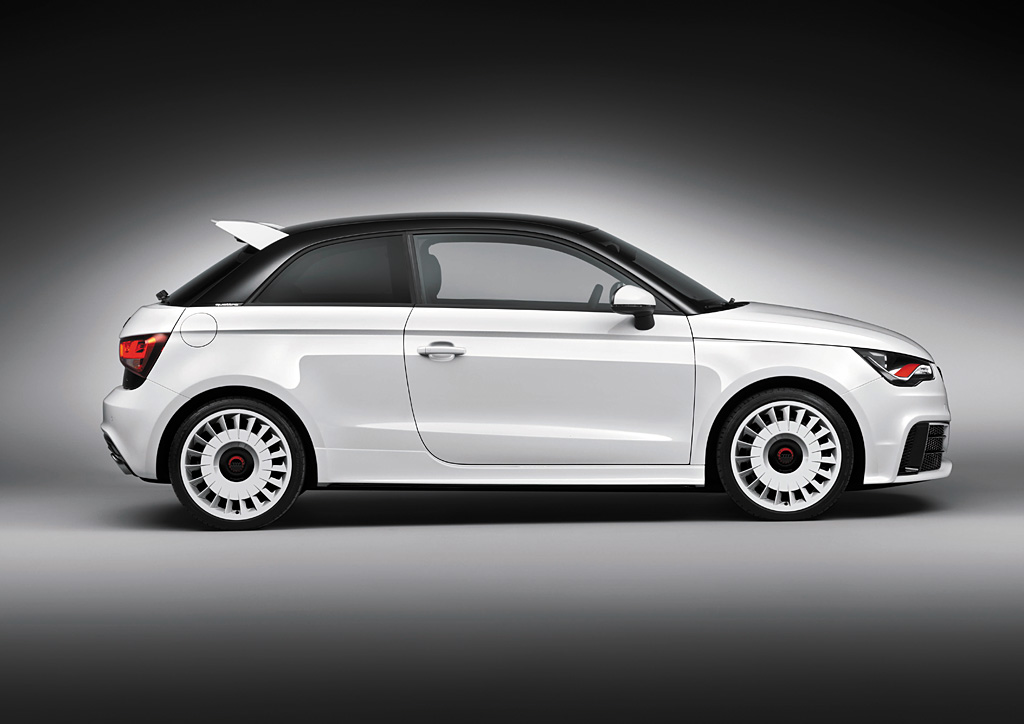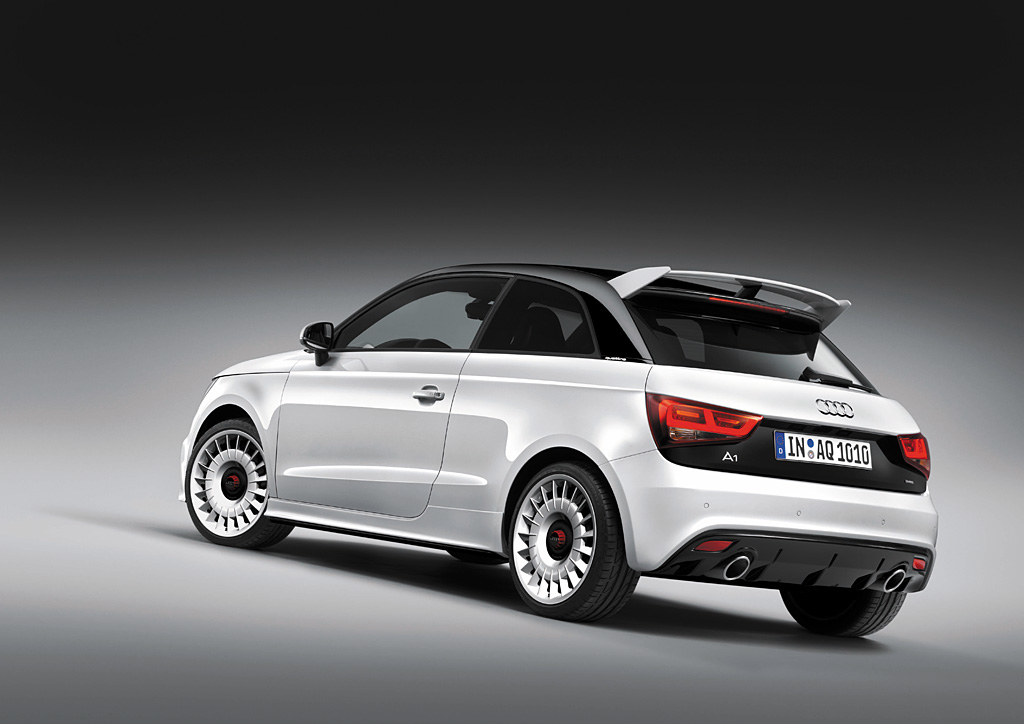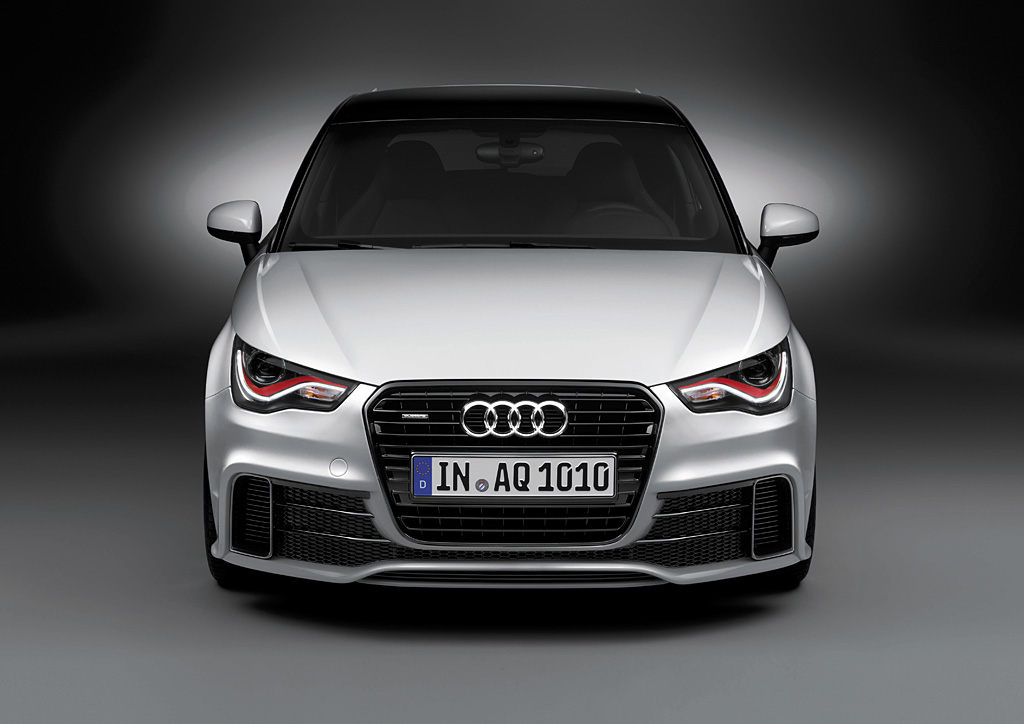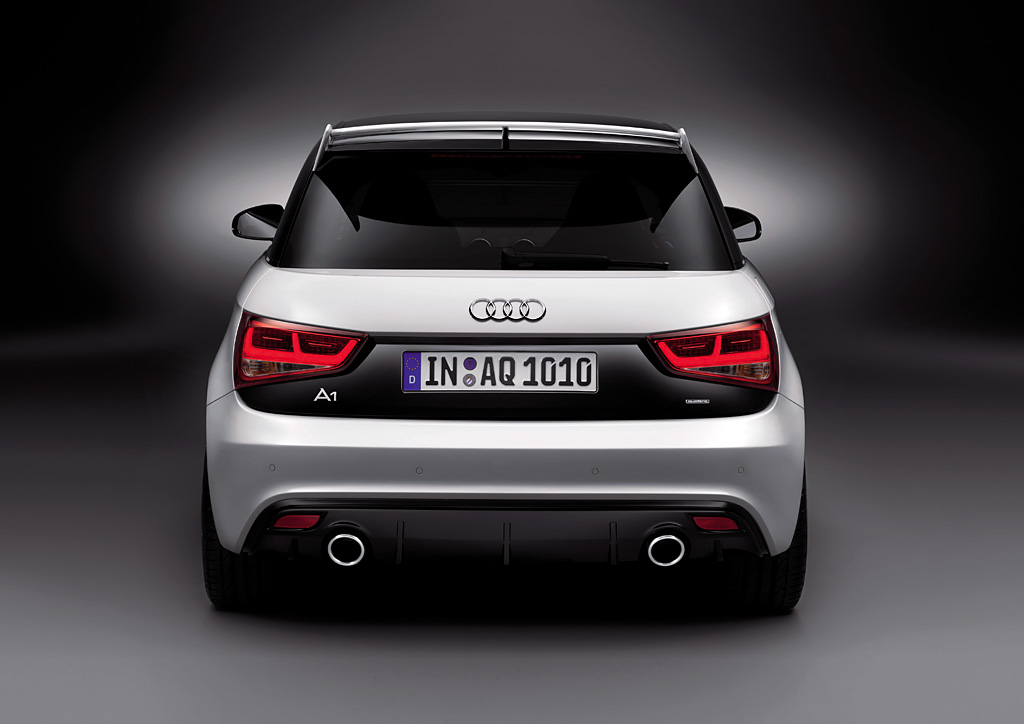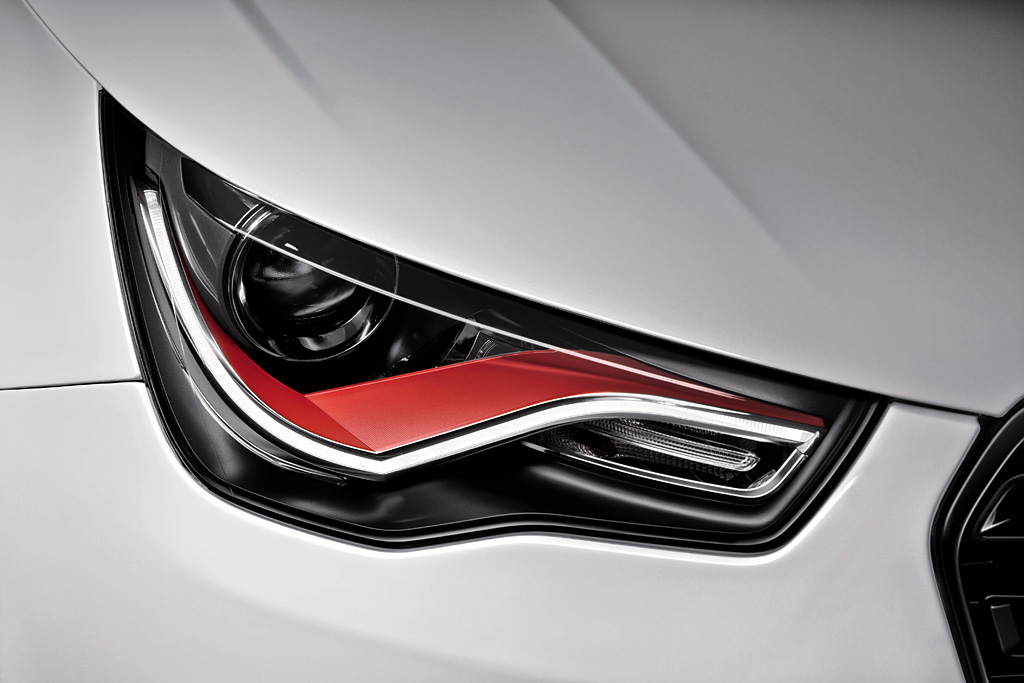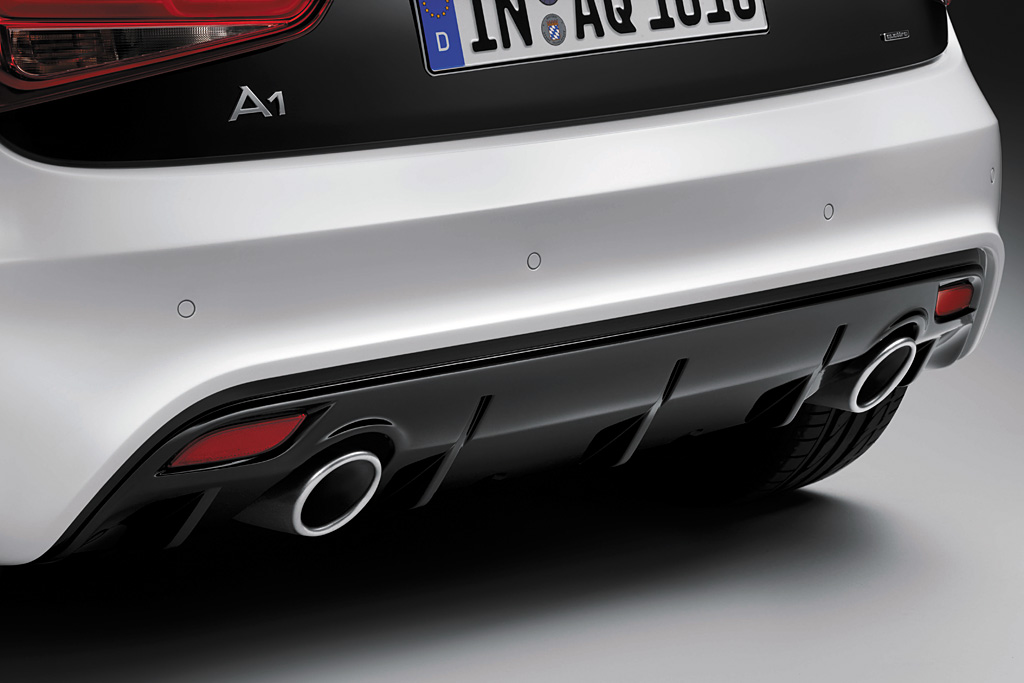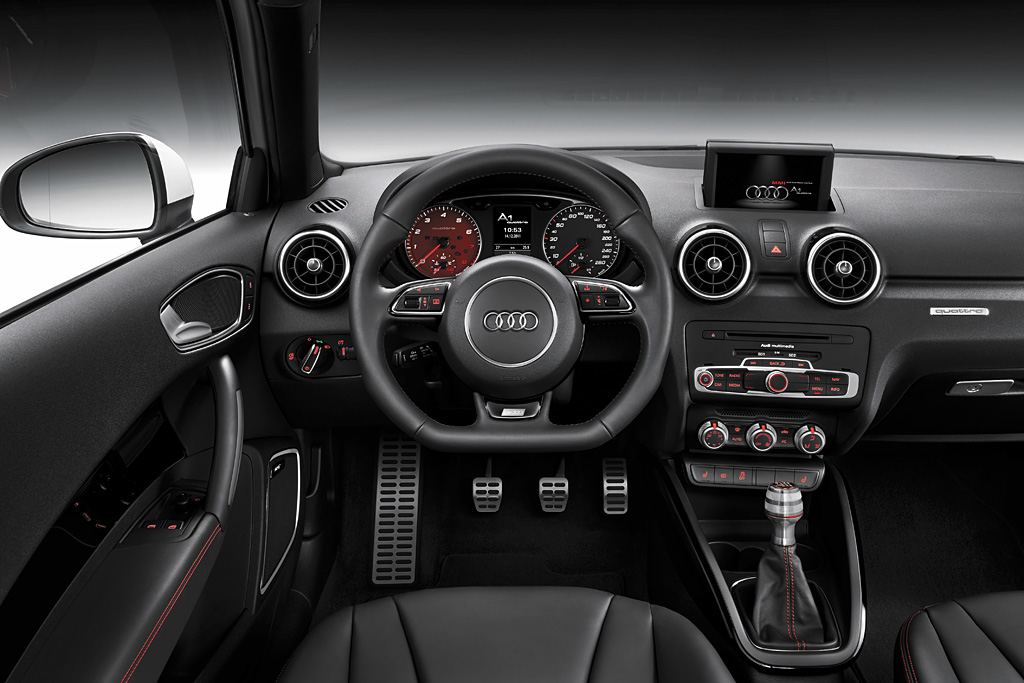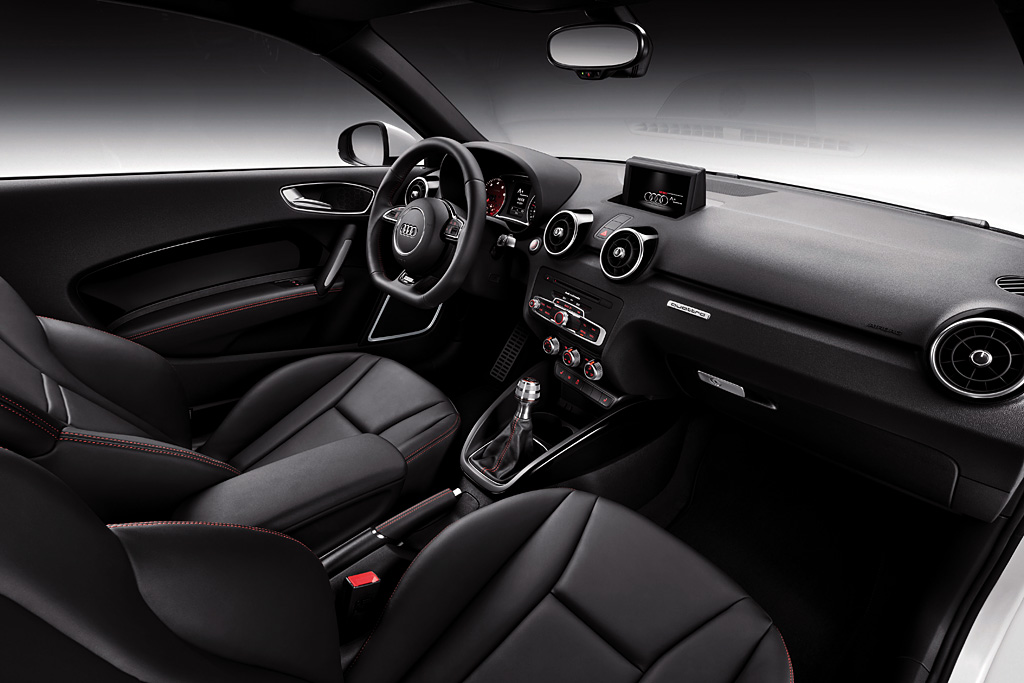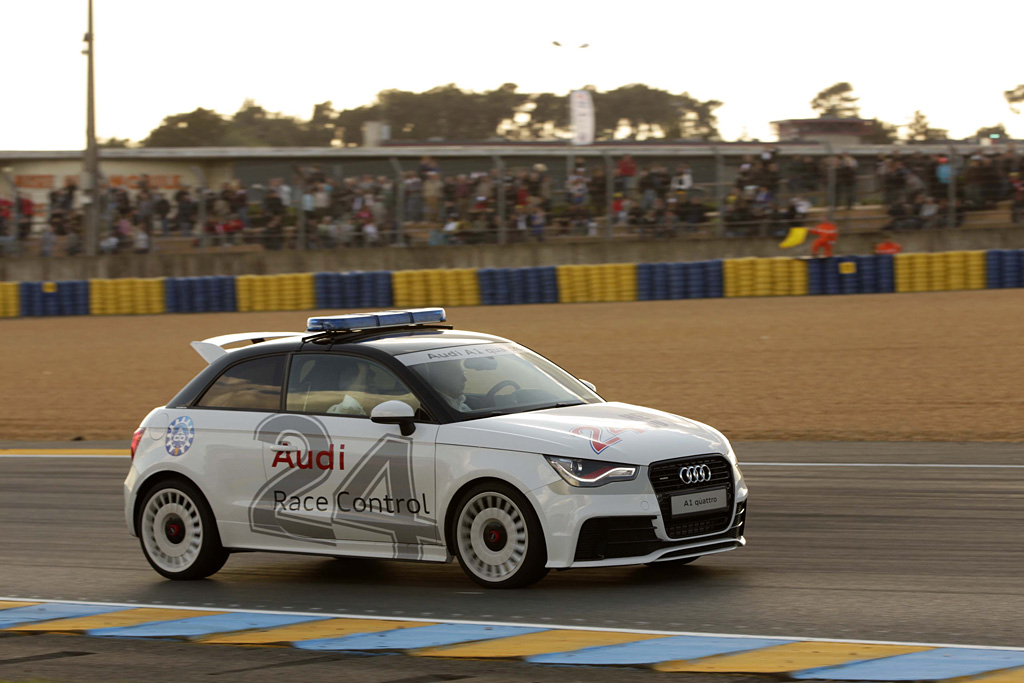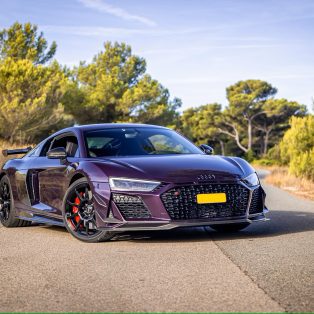2012 Audi A1 quattro
Audi is crowning its successful A1 model series with an exclusive top-of-the-line model. The dynamic A1 quattro, limited to just 333 units, moves to the head of the compact class. Its two-liter, turbocharged engine produces 188 kW (256 hp) and 350 Nm (258.15 lb-ft) of torque, which is delivered to all four wheels. The Audi A1 quattro sprints from zero to 100 km/h (62.14 mph) in 5.7 seconds and has a top speed of 245 km/h (152.24 mph).
The A1 quattro is powered by the 2.0 TFSI engine. The 1,984 cc, four-cylinder engine combines gasoline direct injection with turbocharging in the classic Audi manner. Among its highlights are the adjustable intake cam shaft and the two balance shafts, which ensure smooth operation. Maximum torque of 350 Nm (258.15 lb-ft) is continuously available between 2,500 and 4,500 rpm, and peak power (188 kW/256 hp) is developed at 6,000 rpm.
Every detail of the sporty, sonorous four-cylinder engine has been optimized for high performance and low fuel consumption. Common rail injection, a turbocharger with intercooler and a regulated oil pump are just a few examples. The Audi A1 quattro is expected to consume on average 8.6 liters of fuel per 100 km (27.67 US mpg). Yet it performs like a top-notch sports car: The standard sprint takes just 5.7 seconds, and top speed is 245 km/h (152.24 mph).
The 2.0 TFSI delivers its power to the quattro permanent all-wheel drive system via a precisely shifting six-speed transmission, bringing Vorsprung durch Technik to the small-car class. The heart of this system is an electronically controlled, hydraulically actuated multi-plate clutch whose package of plates rotates in an oil bath.
During normal driving, the clutch sends most of the engine’s power to the front wheels. If traction decreases there, the clutch can transfer torque steplessly to the rear axle in just a few milliseconds by forcing the packages of plates together by a defined amount. A pressure reservoir helps the electric pump to develop the oil pressure. If a wheel on one of the axles should slip, it is braked by the electronic differential lock (EDL).
The placement of the multi-plate clutch at the rear axle provides for a harmonious distribution of the axle loads, and the chassis of the Audi A1 quattro has been adapted to the dynamics of the drivetrain. It is much more tautly tuned than that of the production model. The front suspension is a McPherson construction; a four-link axle is used at the rear. The sensitive and efficient electrohydraulic power steering has a sporty, direct 14.8:1 steering ratio.
The Audi A1 quattro rolls on 8.0 J x 18 cast alloy wheels. They are Glacier White, feature an exclusive turbine design and are fitted with 225/35-series tires. The internally vented front brake discs measure 312 millimeters (12.28 in) in diameter and are gripped by black calipers. The ESP stabilization program includes a sport mode and can be switched off entirely for a trip to the race track, for example.
One look is all it takes to see that the Audi A1 quattro is a very special vehicle. It is available only in Glacier White metallic, and its roof is painted high-gloss black. The front bumper is muscular, the frame and grate of the single-frame grille are high-gloss black. The curved bars in the headlights – the wings – are red. The grille, the roof arch and the rear hatch sport quattro badges.
The rear windows are tinted; the roof flows into a large, two-color wing. The color black accentuates the rear hatch and the diffuser. The LED rear lights are tinted; the rear bumper sports a distinctive look. The exhaust system terminates in two polished dual tailpipes on the left and the right, each measuring 100 millimeters (3.94 in) in diameter. The A1 quattro is 3,987 millimeters (13.08 ft) long, 1,740 millimeters (5.71 ft) wide and 1,416 millimeters (4.65 ft) tall, making it somewhat longer than the model on which it is based. Luggage capacity is 210 liters (7.42 cu ft); folding down the rear seats increases this to 860 liters (30.37 cu ft).
Cool, sporty black dominates the interior of the Audi A1 quattro. The seats and the armrests on the doors are covered in Silk Nappa leather with contrasting red seams. The S sport seats up front have pronounced bolsters, integrated head restraints and a quattro badge on the backrest covers. The seats feature multi-way adjustment. The lower section of the center console shines in high-gloss black; the footrest and the pedal caps are made of brushed stainless steel. Red seams frame the floor mats, and the door sill trims bear A1 quattro badges.
The instrument cluster has a number of eye-catching features, including white needles, a red tachometer, the quattro logo and the color display for the driver information system. The multifunction sport steering wheel is flattened at the bottom, wrapped in leather with contrasting red stitching and sports the car’s serial number. The shift lever knob is made of aluminum. Many control elements have an aluminum-look finish.
The Audi A1 quattro will be available from the second half of 2012 and will be supplied to customers with a full range of equipment. It includes many features taken directly from the luxury class, including xenon plus headlights, high-beam assistant, adaptive brake lights, LED interior lighting package, light and rain sensor, automatically dimming interior mirror, rear parking system, automatic air conditioning, alarm system, storage package, convenience key and cruise control.
The infotainment equipment likewise leaves nothing to be desired. It includes a CD changer, a digital radio tuner, the Audi music interface and MMI navigation plus. The Bose sound system drives 14 speakers with 465 watts of power; the woofers in the doors are indirectly lit with light guide LEDs. Audi connect uses the Bluetooth online car phone to connect to the Internet and deliver special web services, including Google Earth, to the car. Passengers can also connect their mobile devices to the integrated WLAN hotspot.
In Detail
| type | Series Production Car |
| production | 333 |
| engine | 2.0 R4 16v TFSI Inline-4 |
| position | Front, Transverse |
| aspiration | Turbocharged |
| ignition | Electronic, Coil on Plug |
| block material | Cast Iron w/Aluminium Alloy Cylinder Head |
| valvetrain | Chain-Driven DOHC, 4 Valves per Cyl |
| fuel feed | Direct Gasoline Injection |
| displacement | 1984 cc / 121.07 in³ |
| bore | 82.5 mm / 3.2 in |
| stroke | 92.8 mm / 3.7 in |
| power | 188 kw / 252.1 bhp @ 6000 rpm |
| specific output | 127.07 bhp per litre |
| torque | 350 nm / 258.1 ft lbs @ 2500 rpm |
| body / frame | Unitary Steel Monocoque |
| driven wheels | quattro 4WD |
| wheel type | Cast Alloy |
| front tires | 225/35-18 |
| rear tires | 225/35-18 |
| front brakes | Ventilated Discs |
| rear brakes | Ventilated Discs |
| front wheels | F 45.7 x 20.3 cm / 18 x 8 in |
| rear wheels | R 45.7 x 20.3 cm / 18 x 8 in |
| length | 3987 mm / 157.0 in |
| width | 1740 mm / 68.5 in |
| height | 1416 mm / 55.7 in |
| top speed | ~245 kph / 152.15 mph |
| 0 – 100 kph | ~5.7 seconds |





